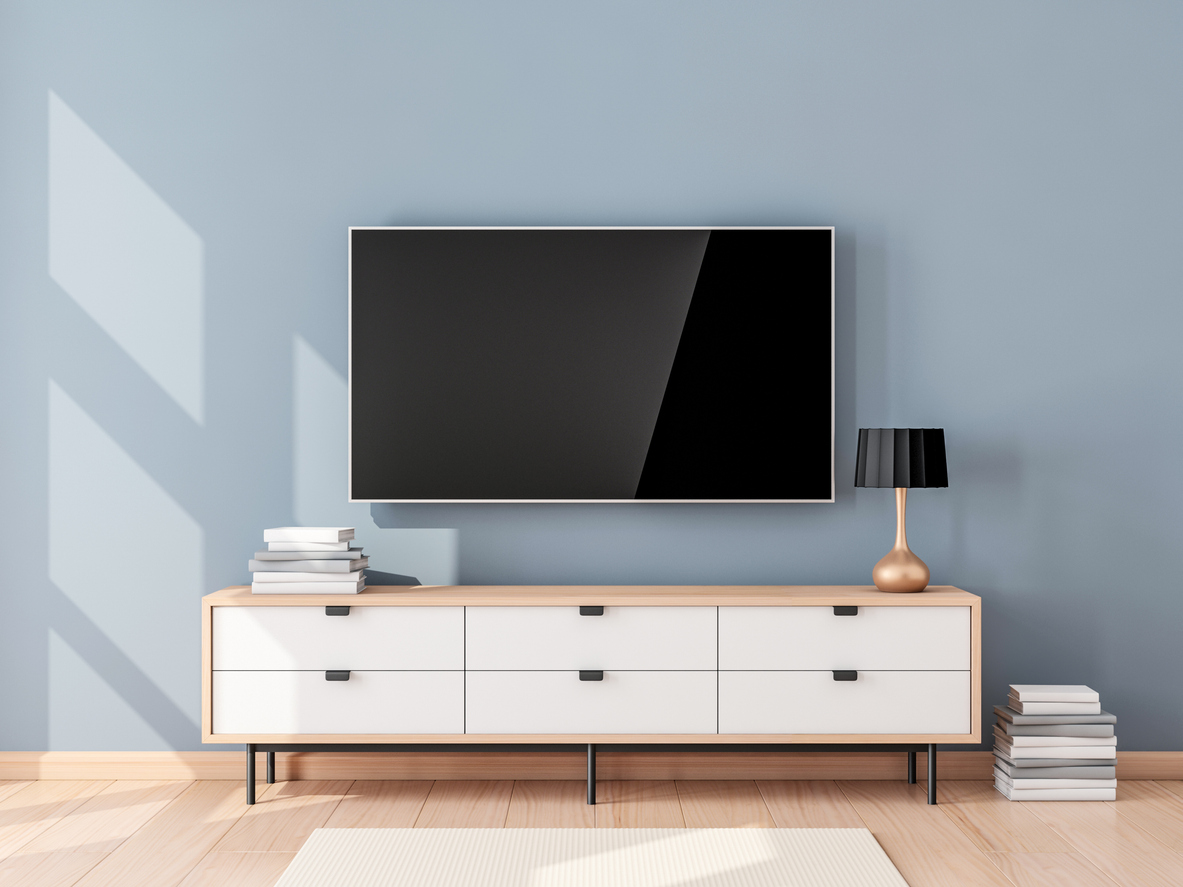Best 55-Inch TVs Under $1,000

Top picks of 55-inch televisions under $1,000 in 2025
Hisense U8N: The Hisense U8N stands out as a leading choice, competing with televisions that are double the price. The colors are exceptionally vivid, and the contrast is remarkable. In laboratory evaluations, it achieved peak brightness exceeding 2,000 nits and, due to its Mini-LED backlight, exhibited minimal to no light bleed. The primary drawback is its restricted quantity of HDMI 2.1 ports (just two), which could hinder gamers intending to purchase several next-generation consoles.
1. LG B4: Consider the LG B4 if you want an impressive TV priced below $1,000. LG's 2024 entry-level OLED TV, the 55-inch variant, is available for slightly under $1,000. Its OLED screen provides excellent black levels and extremely versatile viewing angles. The B4 delivers a striking high-contrast image, and its deep black levels enhance its somewhat low highlights (approximately 660 nits). Its image processing, especially its ability to manage motion, is remarkable. High-energy action films and sporting events appear particularly impressive. In LG's Filmmaker mode, the B4 provides exceptional out-of-the-box color precision, making it perfect for cinephiles and home theater aficionados. It provides many of the gaming improvements available on premium LG OLEDs, featuring 4K gaming support on all four HDMI 2.1 inputs.
2. Hisense U7N: This model represents Hisense's mid-tier Mini-LED television for 2024. It doesn't shine as brightly as the more expensive U8N, and its local dimming isn't quite as accurate, but it's an excellent choice for gamers and home theater fans wanting to upgrade for under $1,000. It's an economical option for gamers to obtain desired features on a budget, such as VRR and support for 4K gaming at up to 144Hz. Similar to the U8N, these functions are restricted to just two of the HDMI inputs on the U7N.
3. Roku Plus Series: The Roku Plus Series represents the streaming powerhouse's initial venture into televisions. Along with providing an abundance of screen for their initial cost, these TVs also offer unexpectedly impressive picture quality and audio. Regardless of its cost, the Plus Series appears premium: A gray metal frame encircles the display on every side. The Plus Series employs quantum-dot LED technology to generate brighter colors and enhanced brightness. The vibrancy of the picture does begin to diminish when you shift away from the screen's center, yet it requires a considerable distance for the display to appear intolerable. In summary, the Plus Series is ideal for viewing almost anything except high-speed action like sports, due to the panel’s restricted 60Hz refresh rate.
4. TCL Q6: If you're in the market for an affordable large screen, you should consider the TCL Q6. It's a budget-friendly TV that attracts many viewers because of its important features. The Q6 utilizes quantum dots to enhance brightness and color volume. It's not really suited for daytime watching in a brightly sunlit room, but most living areas should be quite accommodating for its subtle backlight. The Q6 comes equipped with the Google TV smart platform integrated directly into the software. The TCL Q6 is compatible with both ALLM and VRR. While 4K gaming at 120Hz isn't feasible, the Q6 can display 1080p and 1440p content at 120Hz, making it a good option for casual gamers.
Key Features to Consider
OLED: OLED televisions deliver perfect blacks and outstanding contrast ratios, ensuring exceptional picture quality, particularly in dimly lit spaces. Nonetheless, they can be pricier and might not shine as brightly as LED/QLED televisions.
QLED: QLED televisions utilize quantum dot technology to improve color and brightness. They usually have greater brightness than OLED TVs and provide outstanding color volume, making them ideal for brightly lit spaces.
LED: LED televisions are the most popular and economical variant. They utilize LED backlighting to light up the screen. Image quality can differ based on the backlighting method (e.g., full array local dimming).
Resolution: 4K resolution (3840 x 2160 pixels) serves as the standard for contemporary televisions, providing crisp and detailed visuals.
HDR Support: HDR (High Dynamic Range) improves the contrast and color spectrum of the image, delivering a more lifelike and engaging viewing experience. Widely used HDR formats are HDR10, Dolby Vision, and HLG.
Refresh Rate: A 60Hz refresh rate works well for most content, while a 120Hz refresh rate is optimal for fast-paced content such as sports and gaming.
Smart TV System: The majority of televisions feature a smart TV system that enables you to stream content from well-known services such as Netflix, Hulu, and Amazon Prime Video. Popular platforms consist of Google TV, Roku TV, and Tizen.
HDMI Connections: Verify that the TV includes sufficient HDMI connections for your devices, like gaming consoles, Blu-ray players, and soundbars. HDMI 2.1 connections are necessary for enabling 4K @ 120Hz gaming.
Audio Quality: Take into account the TV's integrated speakers; however, for improved sound, investing in a soundbar or surround sound system could be beneficial.
Conclusion
Buying a television can be very investing both for time and money, therefore, doing the right research is very vital before going for any television. Understand your needs, room’s size and actual budget, after that, start researching for different brands that come under that tangent.
United States






